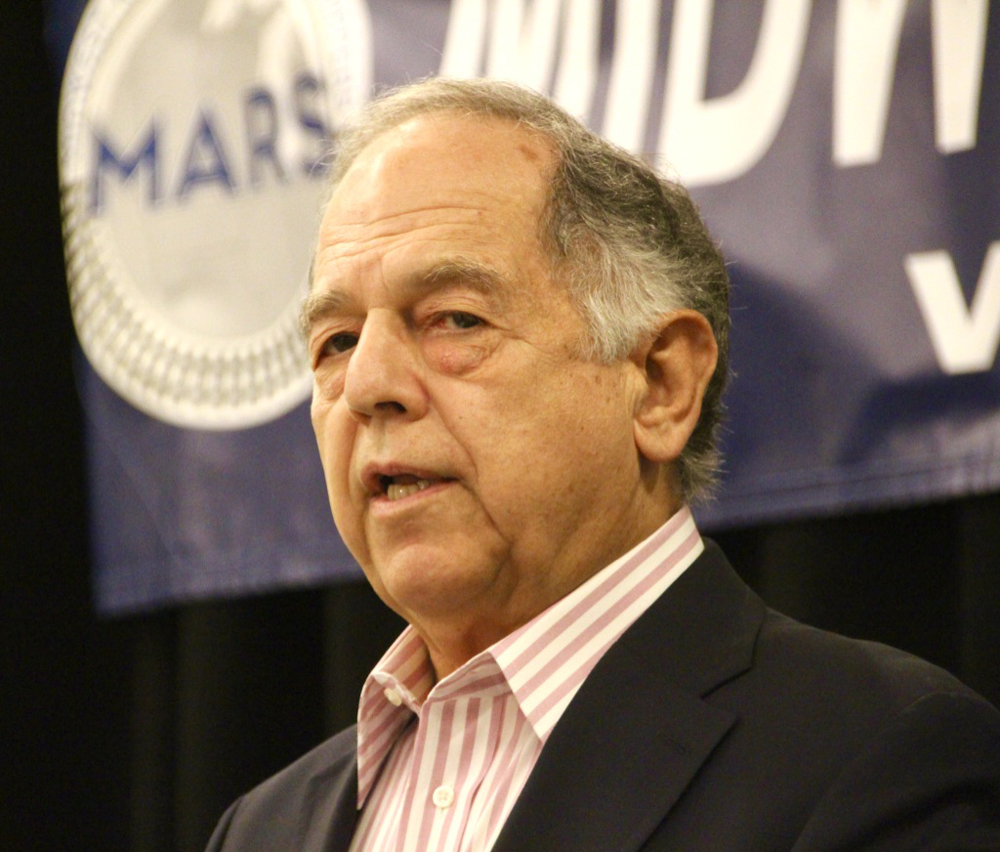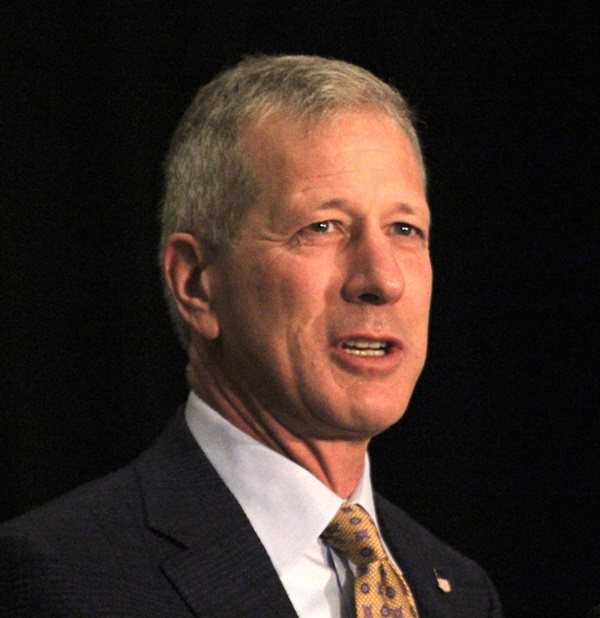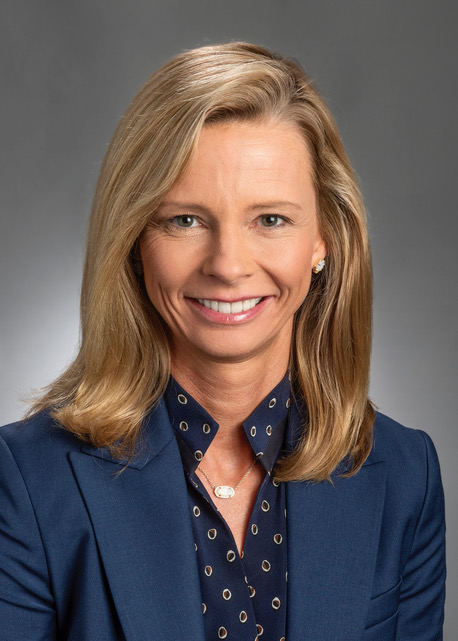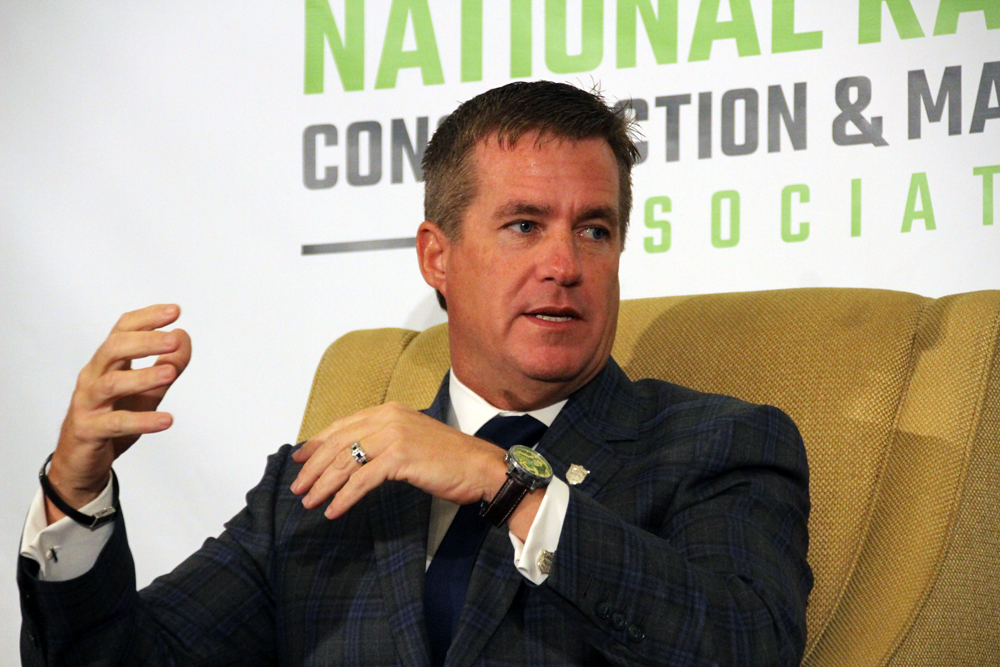
CHICAGO — Surface Transportation Board Chairman Martin J. Oberman stepped up his criticism of Class I railroads on Wednesday, saying the industry’s drive for ever-increasing profits resulted in a loss of market share to trucks over the past 15 years and is restraining growth today.
Rail rates fell by 27% between 1985 and 2004, as railroads’ improved productivity largely benefitted shippers, Oberman told the North American Rail Shippers conference. “But that happy combination came to an end beginning in roughly 2004,” he says, noting that rail traffic peaked in 2006, or in 2002 when coal is excluded from the tally.
“In the last 15 years, since 2006, our economy has grown by more than 50% — nearly $8 trillion of enhanced economic activity,” Oberman says. “And yet railroads are carrying less freight today than they were in 2006 while rates have gone up. There just might be a connection.”
If railroads had simply hung on to their market share since 2002, there would be nearly a million fewer truckloads on highways each year, Oberman says. The shift of freight from rail to truck also resulted in 123 million tons of additional carbon dioxide emissions that cause climate change, he says.
“This pattern simply cannot be allowed to continue,” Oberman says.
Railroads talk about growth and service improvements that make them better competitors against trucks, Oberman says. “The railroads’ emphasis has not been on growth,” he says. “Rather the emphasis has been on cutting in pursuit of the almighty [operating ratio] down to below 60%.”
To satisfy Wall Street demands for lower operating ratios, or O.R.s, the Class I railroads have cut their workforces by 25% in recent years, which Oberman says makes it difficult to provide more reliable service and recover from disruptions like extreme weather events. It’s also led to railroads demarketing certain types of traffic, he contends.
“It is clear that as a whole, railroads have foregone many kinds of carloads that they could carry profitably, only not at O.R.s as low as 55%, and instead have focused only on the most profitable traffic,” Oberman says. “No one is asking the railroads to focus on traffic that would only be carried at a loss. But surely it is not asking too much for railroads to actively seek profitable traffic, even if not as profitable as others.”
Oberman says Wall Street’s influence has put shareholder interests above those of other key railroad stakeholders, including customers, employees, and the public. And he was critical of railroad stock buyback programs and dividends that have put more money in shareholders pockets than into maintaining and expanding the rail network.
In the last decade, Oberman notes, the five U.S.-based Class I railroads have returned $191 billion to their owners while spending $138 billion on capital expenses. “That’s all well and good for the owners,” Oberman says. “But where would rail customers, rail workers, and the public be if a meaningful portion of that $191 billion had been reinvested in expanding service and making service more predictable, reliable and on time? Clearly we would have more freight moved, more quickly, and at lower rates. We would have more employment with better working conditions. And the public would be better served with a boost to the economy, lower consumer prices, and far cleaner air and safer and better conditioned highways.”
All of this could be accomplished, Oberman contends, while still providing good returns for rail investors.
The STB is considering a number of regulatory reforms, including reciprocal switching; making it easier for shippers to challenge rates; asking railroads to provide data on local service; expanding regulation to several commodities that are currently exempt from board review; and Amtrak access to host railroads.
The board must recognize today’s economic trends and respond accordingly to ensure a healthy rail system, Oberman says.
“It bears repeating that 2021 is not 1980,” Oberman says, referring to the year when the rail industry was largely deregulated with the passage of the Staggers Act. “And responding to the STB’s current role in the system by merely invoking the Staggers Act does not advance the discussion. The railroad industry of today is far cry from the railroad industry of 1980.”
Railroads Push Back

Union Pacific CEO Lance Fritz, who addressed the conference in his role as chairman of the Association of American Railroads, says the regulatory framework of the past four decades has produced a freight rail system that is the envy of the world due to its efficiency, safety, and service.
“The STB really needs to worry about not implementing wholesale changes that would compromise our ability to continue that investment that enables that kind of service,” Fritz says.
The top concern with the STB’s agenda, Fritz says, is calls for reciprocal switching, which allows sole-served shippers to access another nearby railroad if they are not satisfied with their carrier’s service and rates. Reciprocal switching might save a few shippers money, Fritz says, but it would hurt service for all customers by creating congestion. It also would reduce a railroad’s incentive to make capital investments when maintenance and improvements would benefit the competing railroad, he says.
The STB is considering removing regulatory exemptions for several truck-competitive commodities, including rock, scrap metal, and even intermodal traffic. “When the STB starts thinking like they’ve got to do something where competition exists, that becomes problematic for the industry,” Fritz says.
Also a blip on the railroads’ radar: Expanding Amtrak access and holding host railroads accountable for passenger train on-time performance.
“In many of our schedules, there’s portions of the route that we can easily beat the schedule and there’s portions of the route where we don’t have a prayer,” Fritz says. The host railroads are all working with Amtrak to develop schedules that are realistic along a train’s entire route, he says.

“There’s just a lot of opportunity for the STB to get that wrong,” Fritz says.
BNSF Railway CEO Katie Farmer took issue with the Biden administration’s July 9 executive order, which largely dovetails with efforts already under way at the STB because it seeks to expand competition across all sectors of the economy.
BNSF, which operates the largest intermodal network in North America, competes every day against trucks, Farmer notes.
And Farmer says there are lessons in the 140 years of railroad regulatory history. “What we have seen when we have overreaching regulation, where we have burdensome regulation, is that it had the impact in the past of constraining capacity, reducing investment, disrupting the supply chain,” Farmer says. “And so none of us should want that under this existing executive order.”
Canadian Pacific CEO defends PSR

Canadian Pacific CEO Keith Creel defended Precision Scheduled Railroading, which has come under criticism from shippers, Congress, rail labor, and the STB.
Creel says the PSR operating model, which has been adopted by all of the Class I systems with the exception of BNSF, is not about slashing costs to the bone. It’s about ensuring that the railroad’s costs are under control and that it has the right number of people and assets like locomotives and freight cars to move freight efficiently. It’s also about partnering with customers, employees, short lines, and respecting regulators, Creel says.
“It really is the right way to run a business. That’s what it is,” Creel says. “It’s not the bogeyman and the evil empire that people think it is.”
Creel, whose railroad has led the industry in growth since he became chief executive in 2017, also disputed Oberman’s contention that railroads are not interested in growing. CP’s formula, Creel says, is to invest in partnership with customers so both the railroad and shipper can grow together.
CP has been able to haul record amounts of Canadian grain since investing $500 million in a new hopper fleet over the past four years and moving to 134-car unit train service in conjunction with shippers. “It’s not because we’re cutting,” Creel says. “It’s because we’re investing for growth.”
CP’s domestic intermodal service is taking trucks off the highway and is the fastest-growing in the industry, Creel says. In Vancouver, Creel noted that CP and ocean shipping line Maersk are partnering on a new transload center that will take thousands of trucks off city streets each year while reducing greenhouse gas emissions and improving service for customers.
And for carload traffic, CP has increased sales staff commissions for new business they bring in, Creel says. Last year, the railway’s sales team drummed up $75 million in new traffic by making thousands of cold calls to potential customers.
“That’s growth. That’s singles and doubles. That’s not bulk business … it’s a boxcar here, a boxcar there,” Creel says.














What do you think AT&T did when they lobbied to have common carriage of internet/cable TV deregulated? They immediately skipped the less profitable and only served areas where profit was the highest. They still could serve certain areas with profit, just *less* profit. It made the numbers (margin per sub) look less juicy to Wall Street, so they didn’t offer the service. Now they expect the taxpayers through the Rural Internet Fund to pay to have services installed where they deem it not profitable enough.
Do you see where this is headed in railroad terms? We already supply tax funded “grants” to the railroads to build bridges, streamline traffic, prop up regionals and short lines, including low interest loans through the RRIF, all to make it worthwhile for these Class 1’s to maintain a stock price through buybacks and dividends.
Either make railroads a public resource like highways and let *all* Class 1’s run across the rails through a user tax or VAT, or stop this charade of thinking these are really shareholder based private entities.
At the moment we are simply playing a game and the taxpayers are losing.
This guy, Oberman, does not have the depth of knowledge and understanding needed to do anything good. He’s got power, but not understanding and knowledge. This is a recipe for disaster.
For example, he cites: “If railroads had simply hung on to their market share since 2002, there would be nearly a million fewer truckloads on highways each year, Oberman says. The shift of freight from rail to truck also resulted in 123 million tons of additional carbon dioxide emissions that cause climate change, he says.”
This is nuts.
Freight movement is concentrated in shorter distances. Trucking has an advantage at shorter distances because they don’t have the terminal expenses the railroads do. So, as freight movement grows the growth is concentrated in movements where trucking has an economic advantage. As an inevitable result, the truckers get a larger share of the overall freight marked. Oberman understands none of this. But he’s out to “Make a Difference.” Nothing good can come of this.
And he brings in “Climate Change” which I regard as code for “Everybody Quit Thinking.”
Creel is a lying sack. The #1 priority of so-called “PSR” is cutting everything, including lower margin freight that doesn’t fit into the predetermined operating plan or help lower the operating ratio.
I worked for a Fortune 200 Corporation for most of my career. In 2000 I moved to Australia to help manage our subsidiary there.
We were going for market share. And being quite successful in doing so. It looked great on paper. But a deep dive into the financials showed that a substantial portion of the newly acquired market share was losing money for us. Ultimately, we changed the game plan; we went after business that was clearly profitable. That is what business is ultimately all about!
As I understand it Oberman is a lifelong government bureaucrat. Has he ever run a competitive enterprise? I’ll take the word of the railroad executives and the numbers shown in their financials over the perspective of a government wonk any day of the year.
Oberman is a lawyer who has government experience and was chair of the Metra board.
Two things regarding Oberman…I completely disagree on the STB looking at a reciprocal switching rule, absolutely not necessary. Second, he needs to talk to the SEC or Congress if needed, but it’s probably not since the STB has the authority to set RR income AR(adequate return on investment) by establishing a minimum/maximum OR. Personally I think a range between 65 and 75 is a starting point, but to piss off Wall Street even more make it 70 – 80, and set huge fines for going below or above those numbers.
As for Mr. Fritz and his comments about Amtrak, how about this scenario…the STB orders the railroads to accommodate Amtrak schedules and new service and they have to build their freight traffic around reasonable service hours for Amtrak trains. I think he’s giving BS when saying new service or increased service interferes with freight traffic, sure it does, when you have 200 car trains that can’t maintain track speed…
becauseWe have had many stories here about shippers wanting or needing cars spotted for loading and unloading and the C1’s can’t or won’t do it. Etc. It is about time that they are kicked where it hurts. I am enjoying my stock returns but am very concerned that they are not sustainable due to the RR’s driving their customers away and narrowing the source of their revenue. Marty is spot on and I hope this gets their attention.
As a 40 year rail shipper (now thankfully retired), I find Chairman Oberman’s comments to be a breath of fresh air! Growth should be a real focus for the C1’s rather than simply a catchy phrase to toss out at meetings with the analysts then carefully packed away till the next quarterly meeting.
Is it too late? I can barely leave my house without seeing locations previously served by rail as recently as a few decades ago, where the sidings and spurs have been torn up. West Allis, Oak Creek, Wauwatosa, Milwaukee, Waukesha …. and I have zero doubt the two or three remaining UPRR customers in New Berlin will be next.
Two of the three power transformer factories in Waukesha are now truck-only, both for materials in and product out. At Miller Beer in Milwaukee, 100% of the product is hauled out by truck; rail is used only for incoming grain. At a chemical plant in Milwaukee, the rail spur is a speed bump for trucks headed to the loading docks. UPRR’s Butler yard in Milwaukee/ Wauwatosa, once a hub for C&NW, now is basically a parking lot for laid-up UPRR locomotives.
Charles; perhaps it is too late. On the other hand, since rail is definitely more energy efficient and environmentally friendly than trucks, perhaps shippers could be incentivized by earning carbon credits for converting from truck to rail.
Yep, Nice to hear railroads for being called out. Undoubtly shippers have a vested interested in getting best rates and services. But they have spoken loud and clear to railroad failings and simply have gone to trucks…
..
Mr. Oberman is spanking the railroads and they are crying like a child saying that they aren’t doing anything wrong. They should admit to there short comings. They don’t want any on line business just end to end haul. This has been going on sense the mid 80’s. Preferably only unit trains, or stack type trains ect. Let short lines block cars for them. Scheduled freight trains as well as precision scheduled freight trains is myth for the SERVICE industry. This may work for the CN and CP but, there is a big difference between Canada and the U.S. as far as amount of shippers on line.
Maintenance of both track and rolling stock is a must. It almost seems that they are going back to deferred maintenance with the carman craft and track dept. with less and less employees to do the work that needs to be done. Seems that there is no one that is left that knows how to run a railroad properly. Just worry about the bottom line for Wall Street. O.R. ?